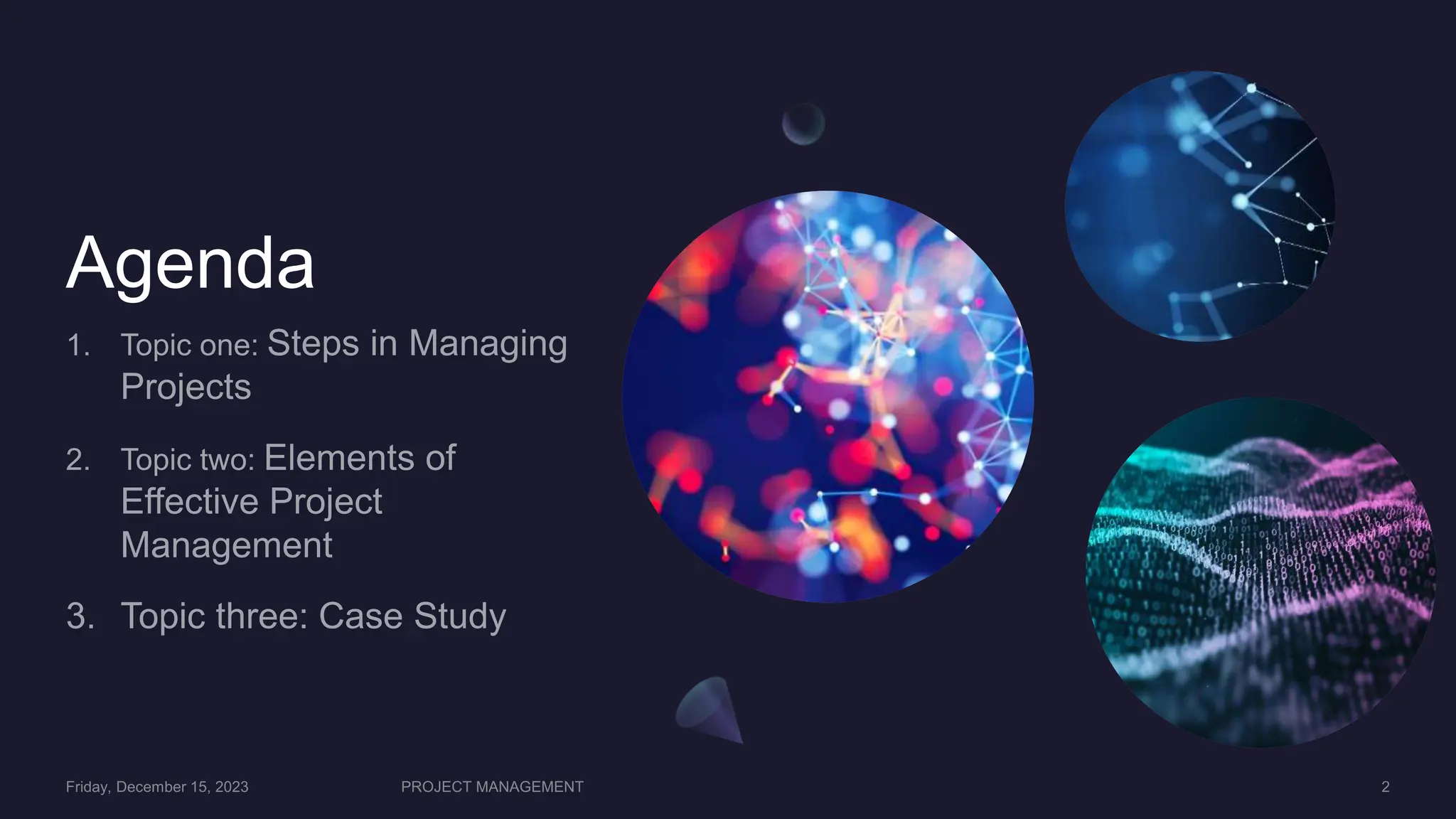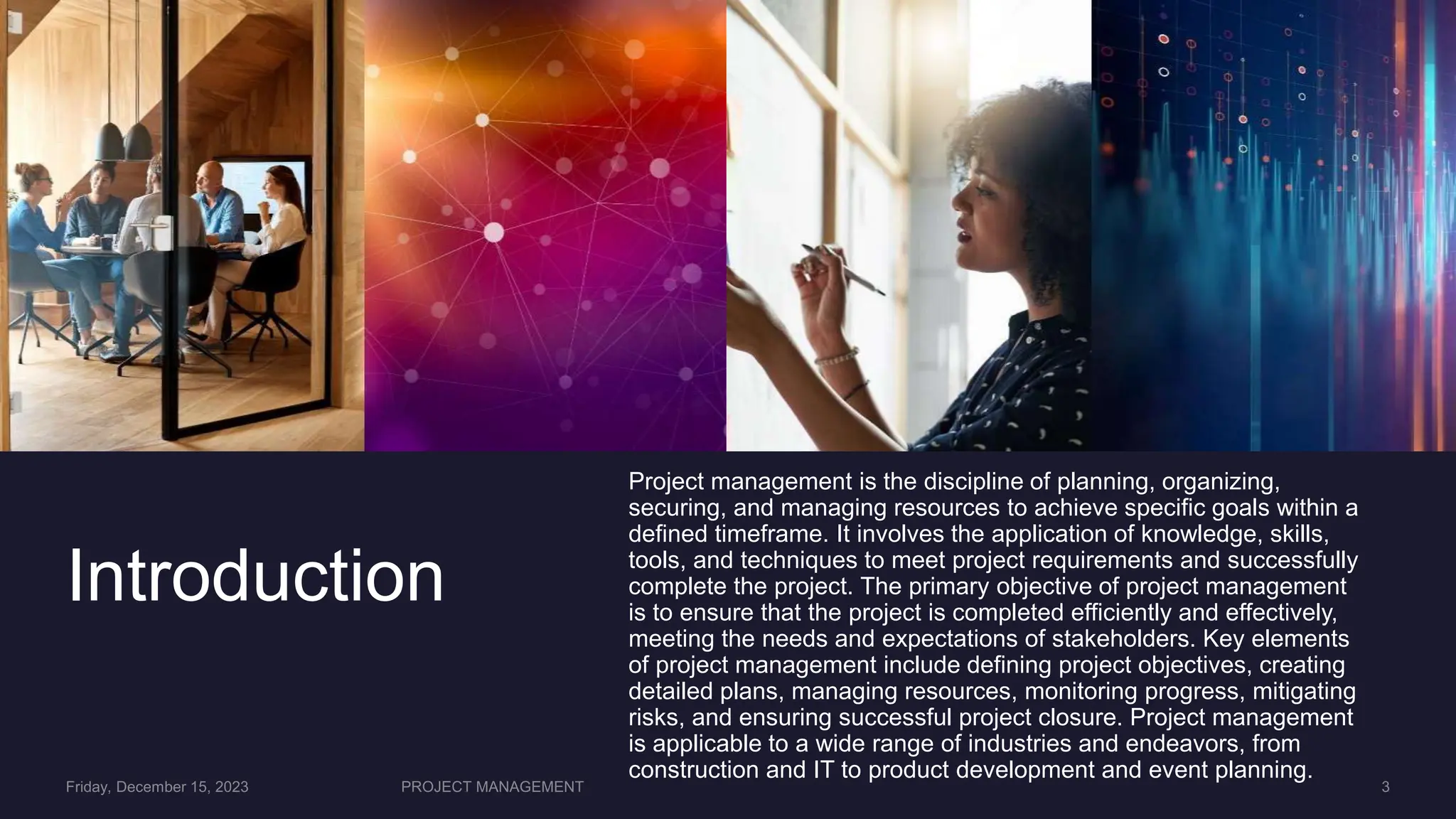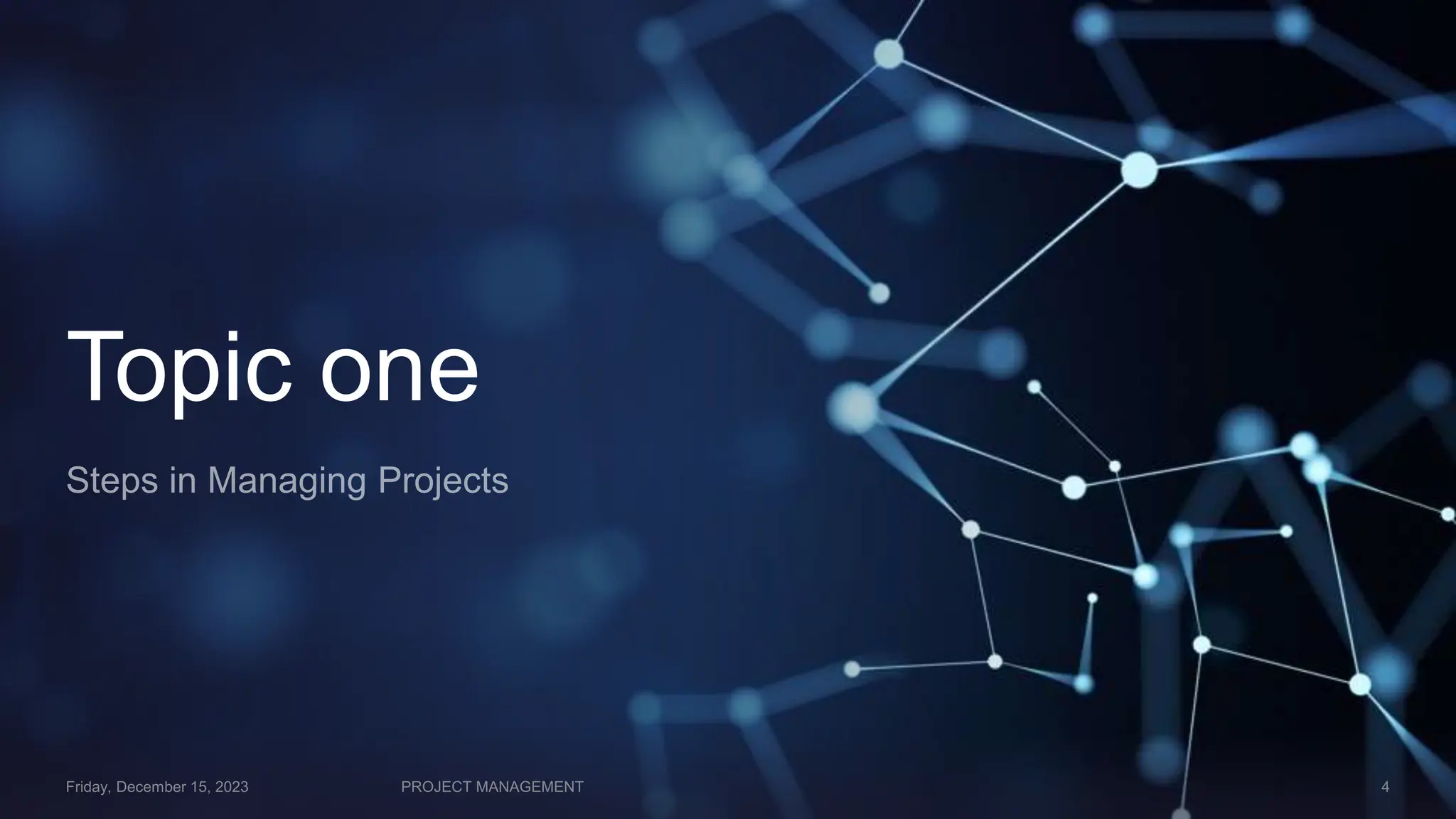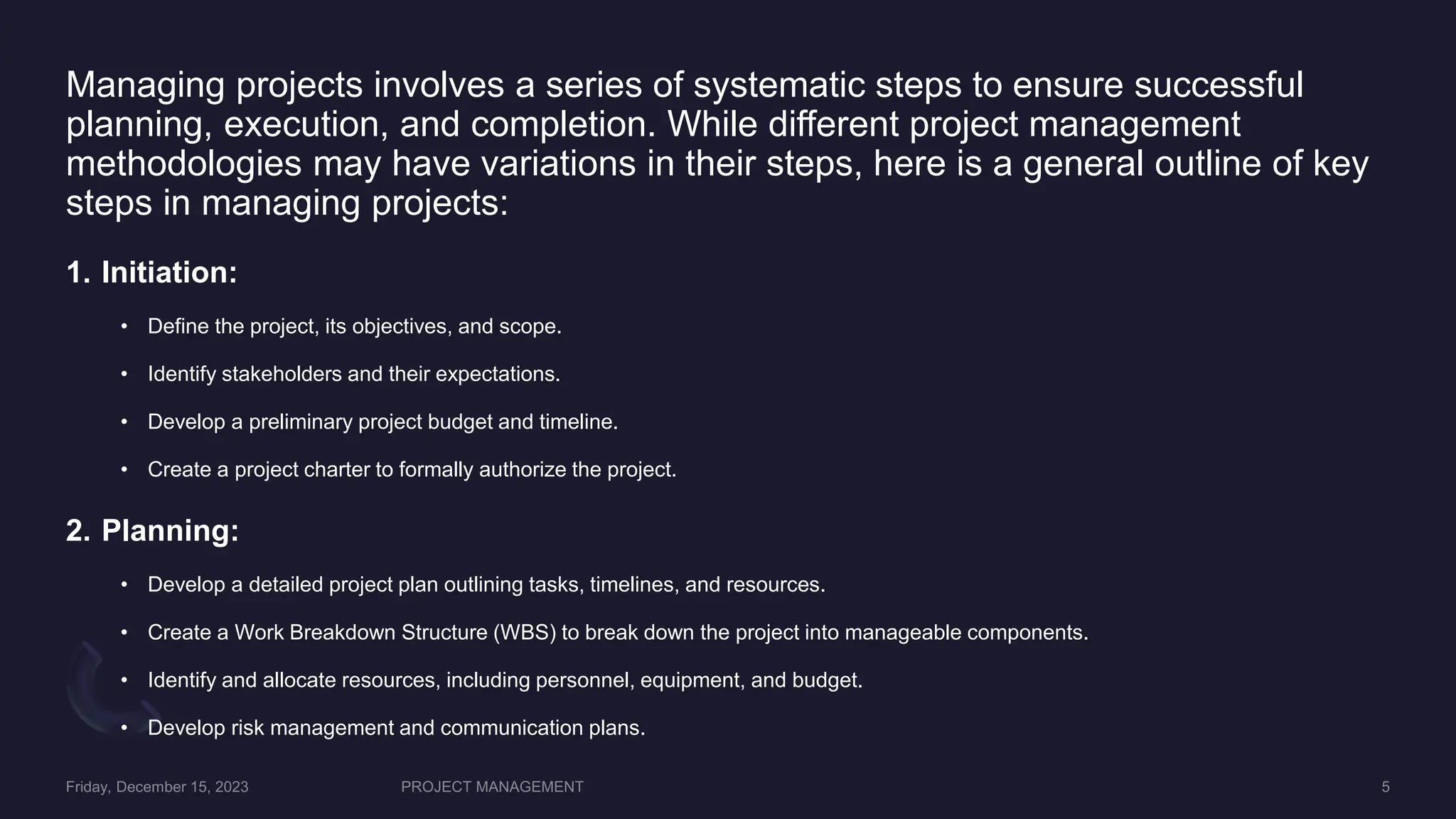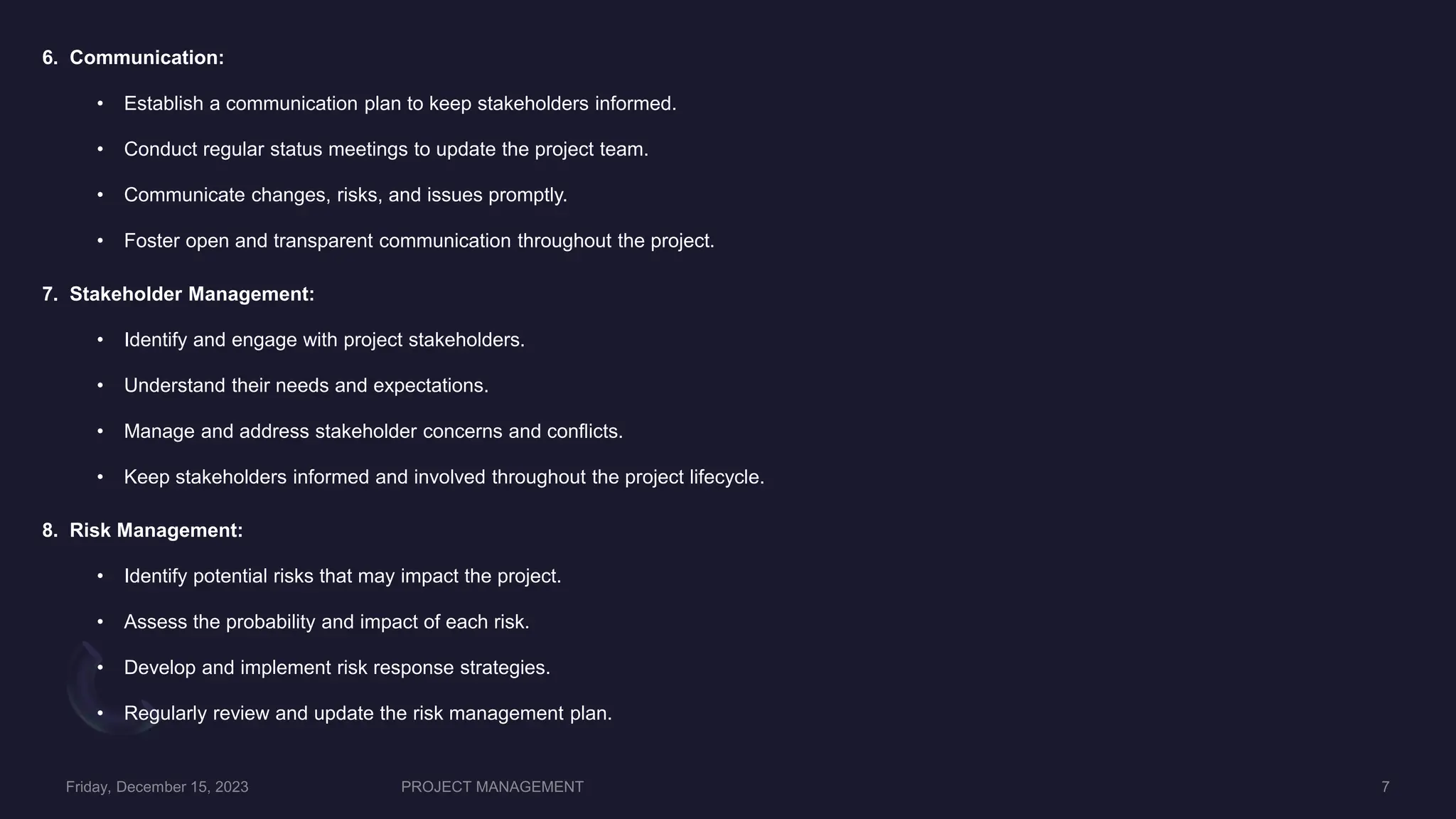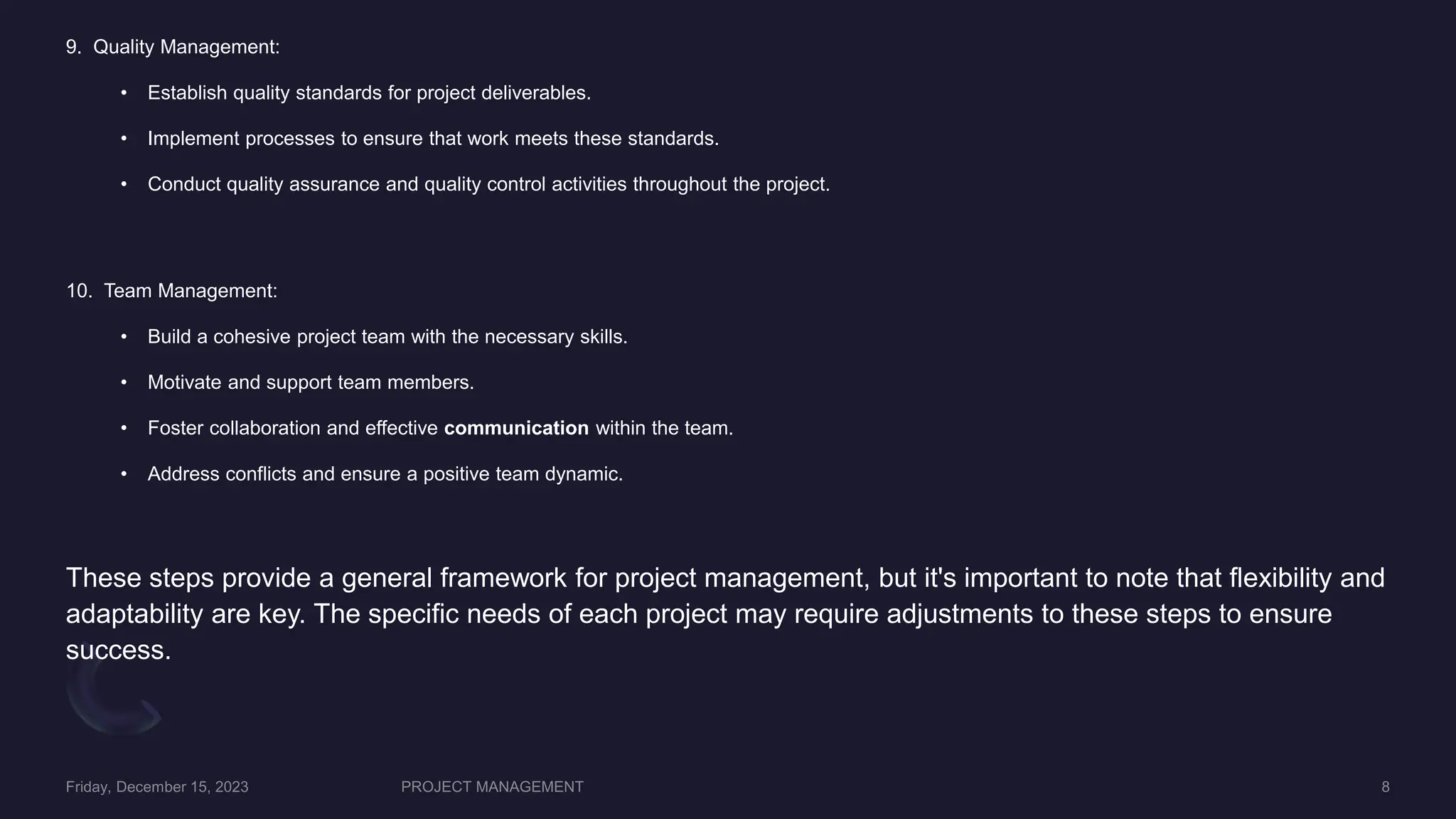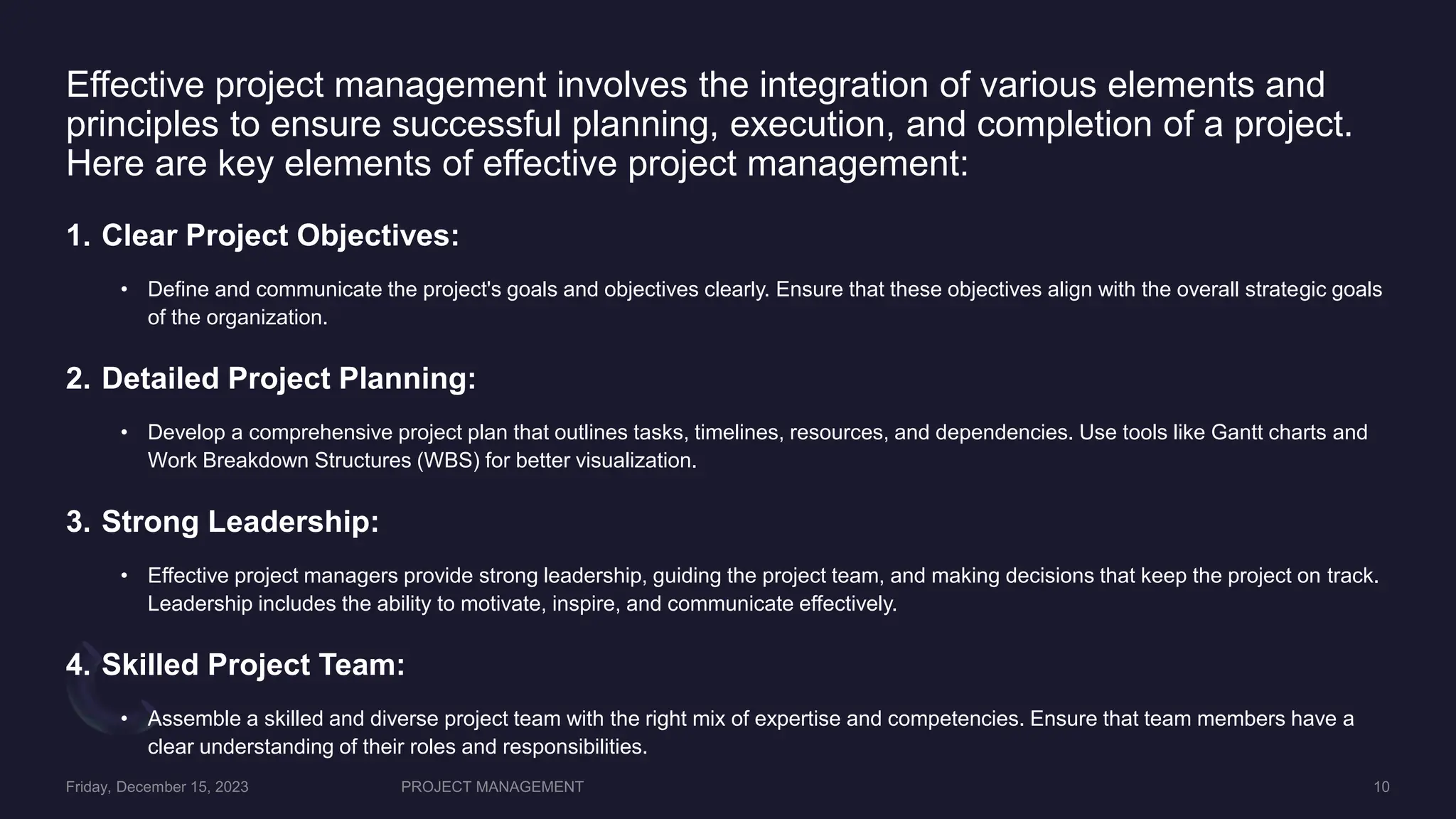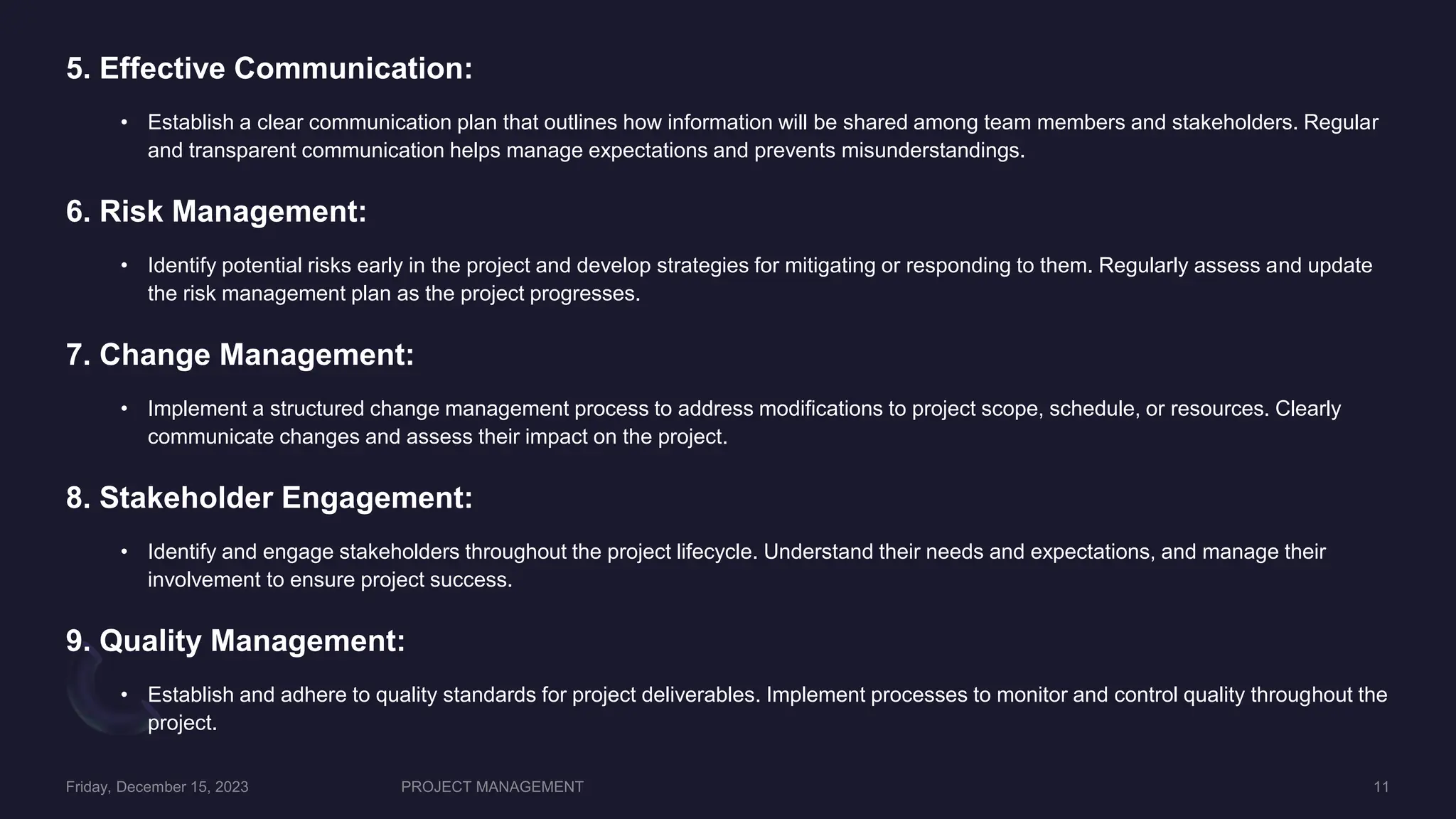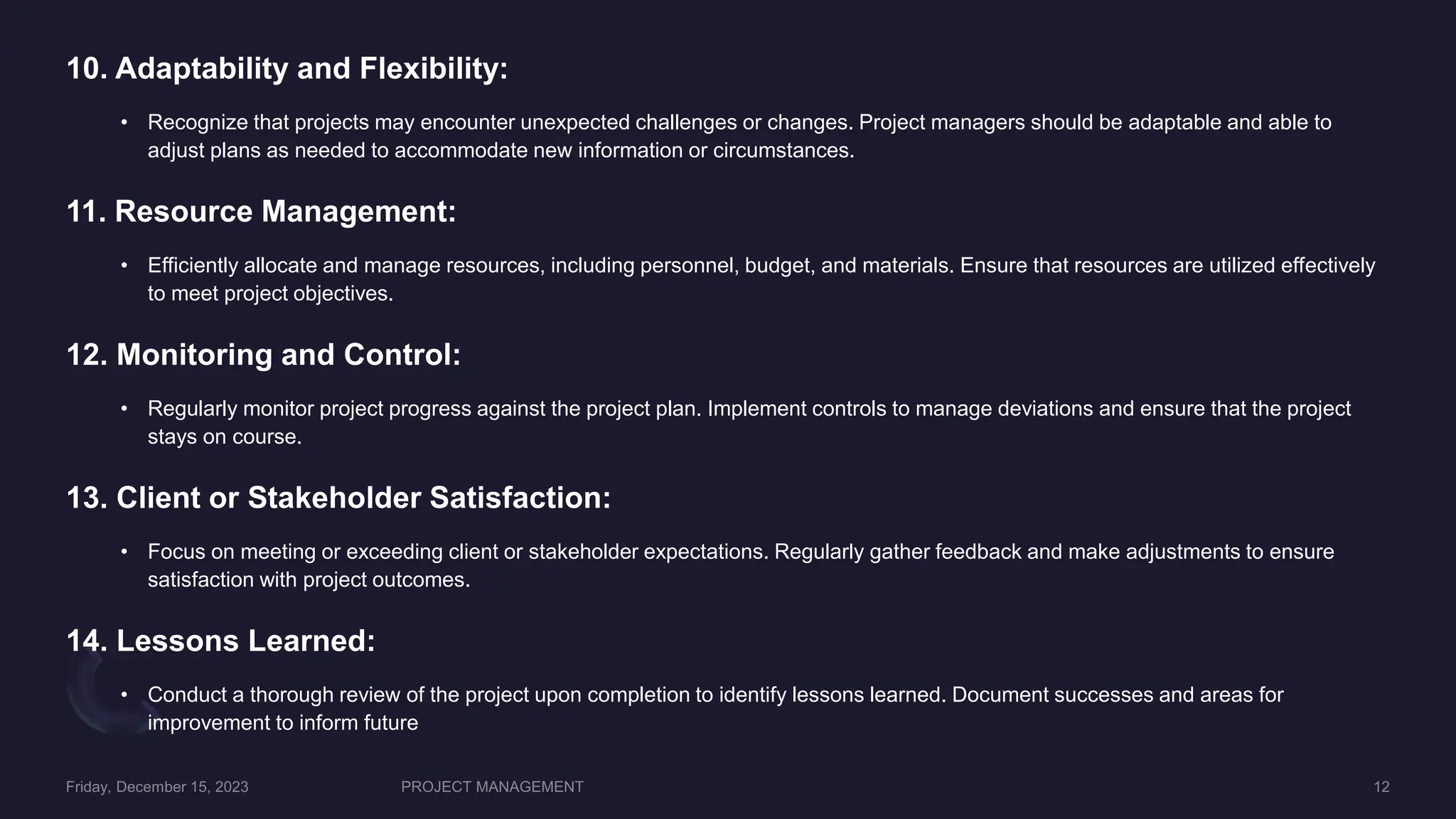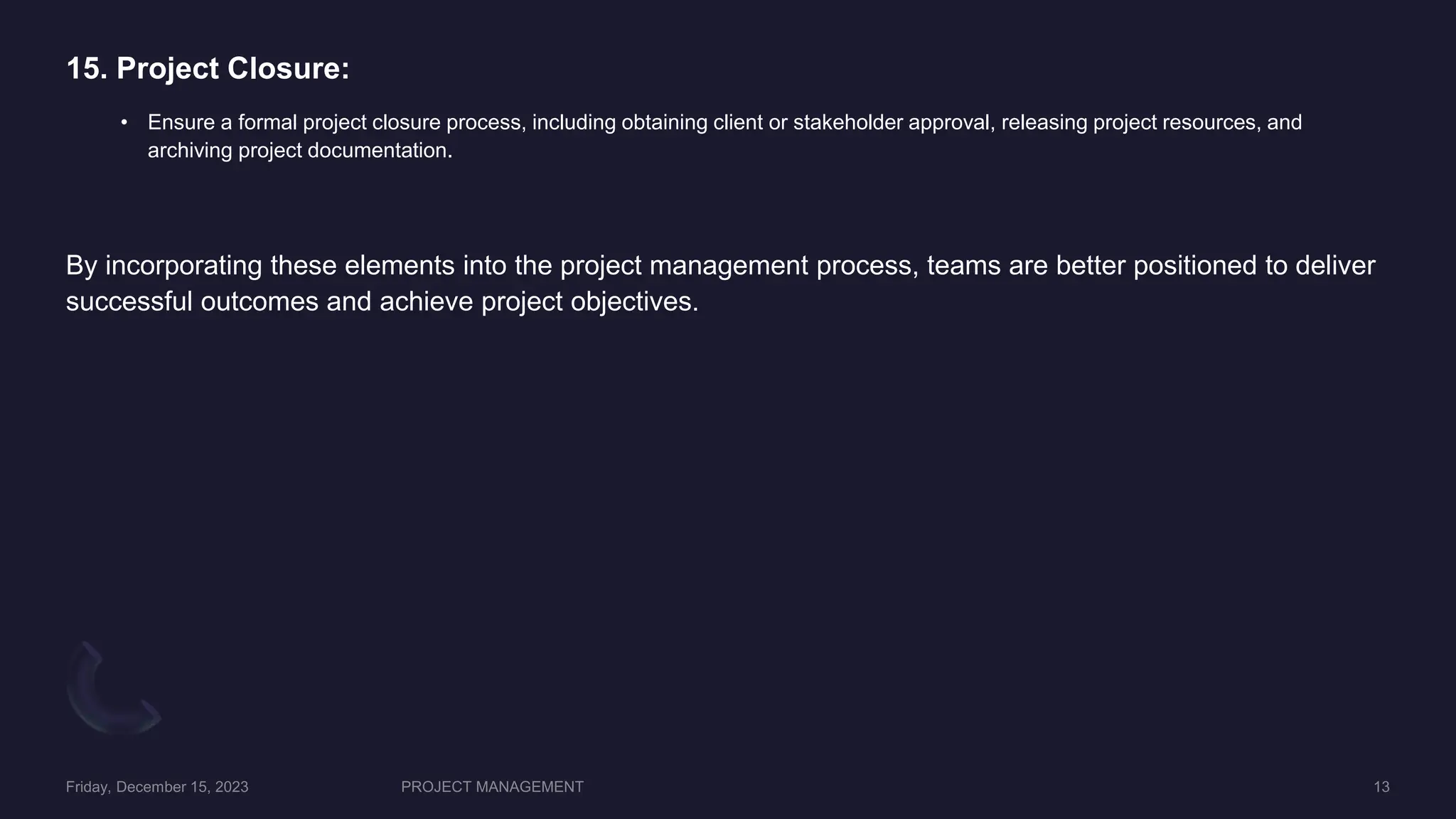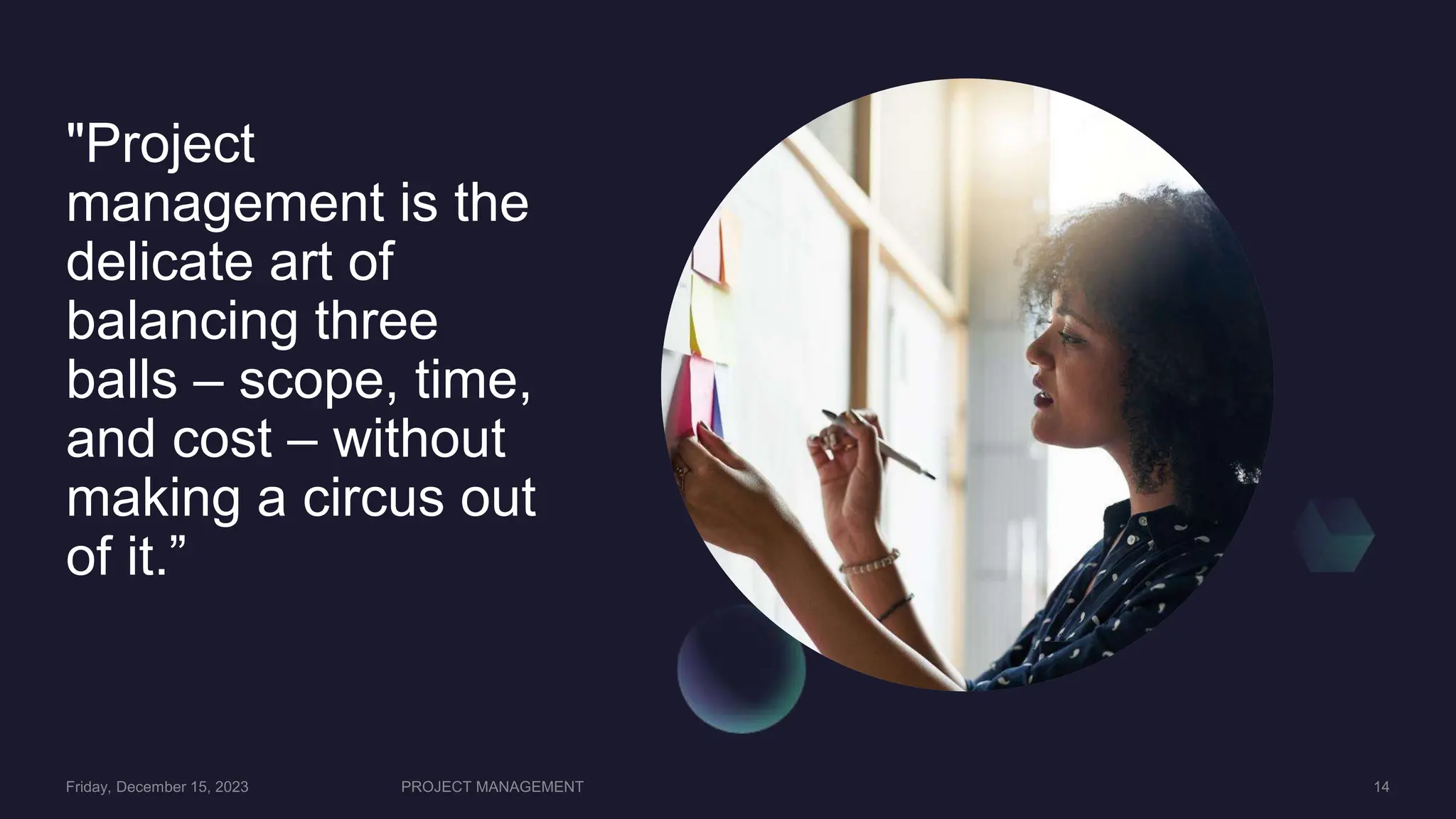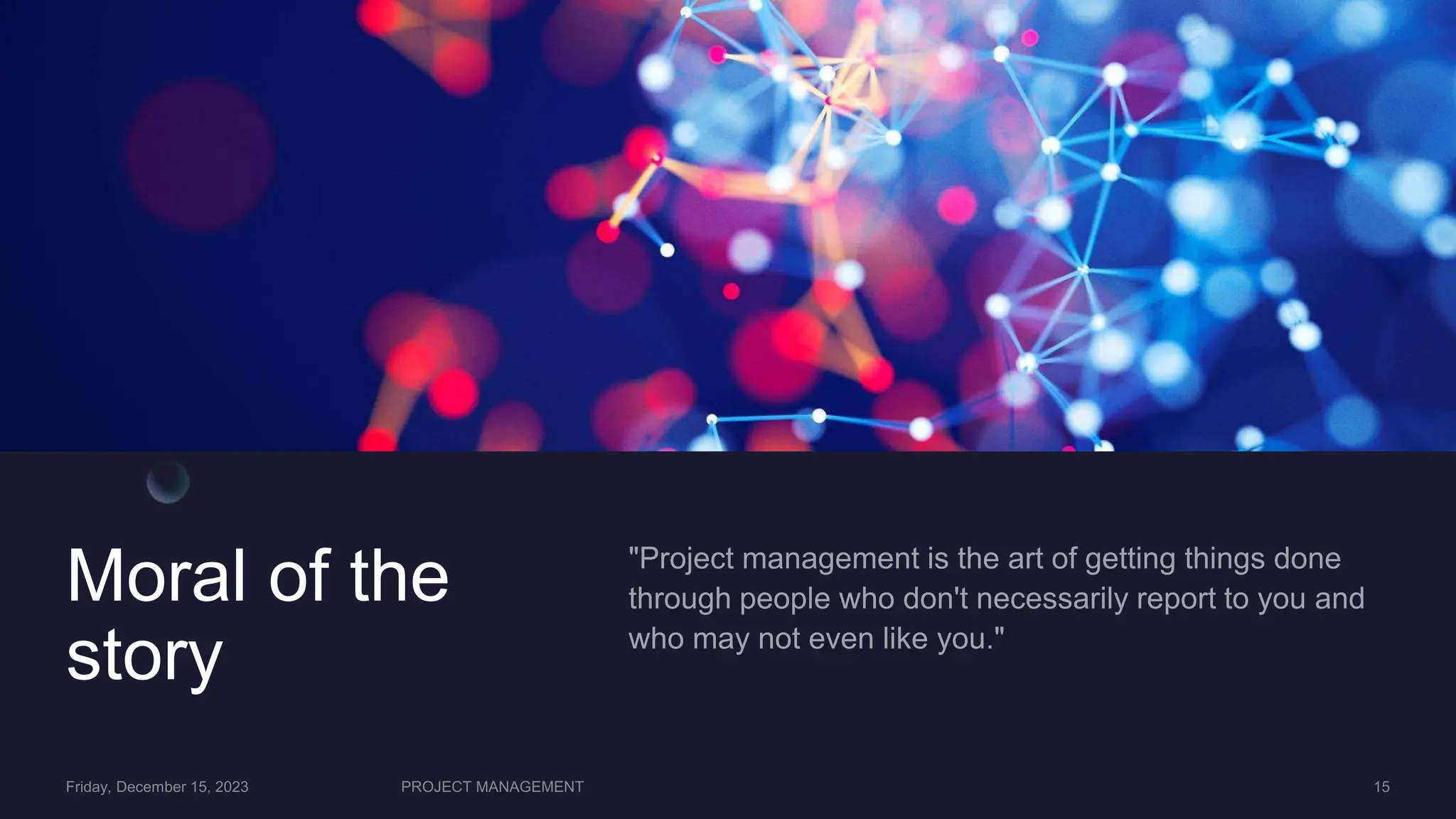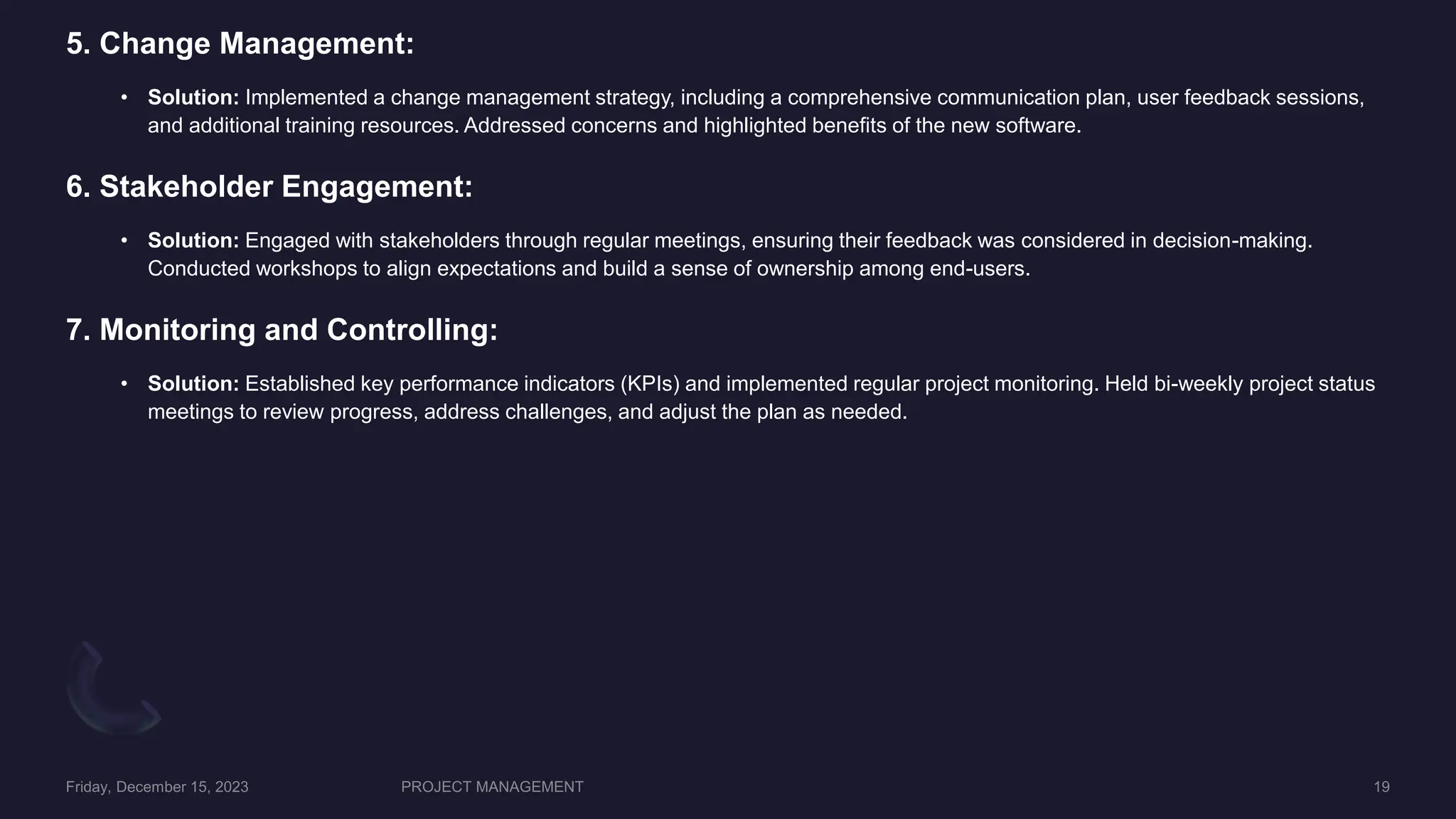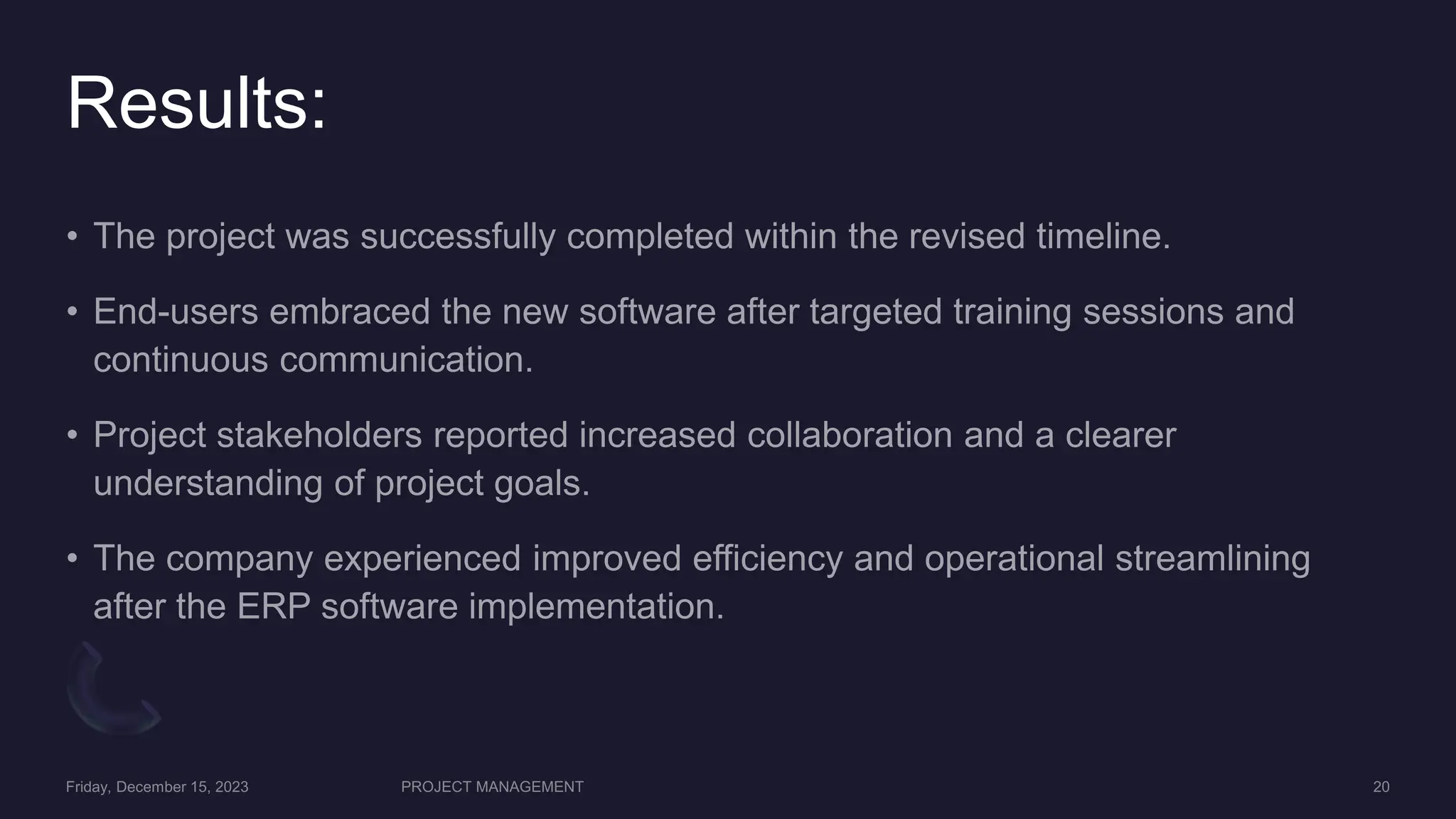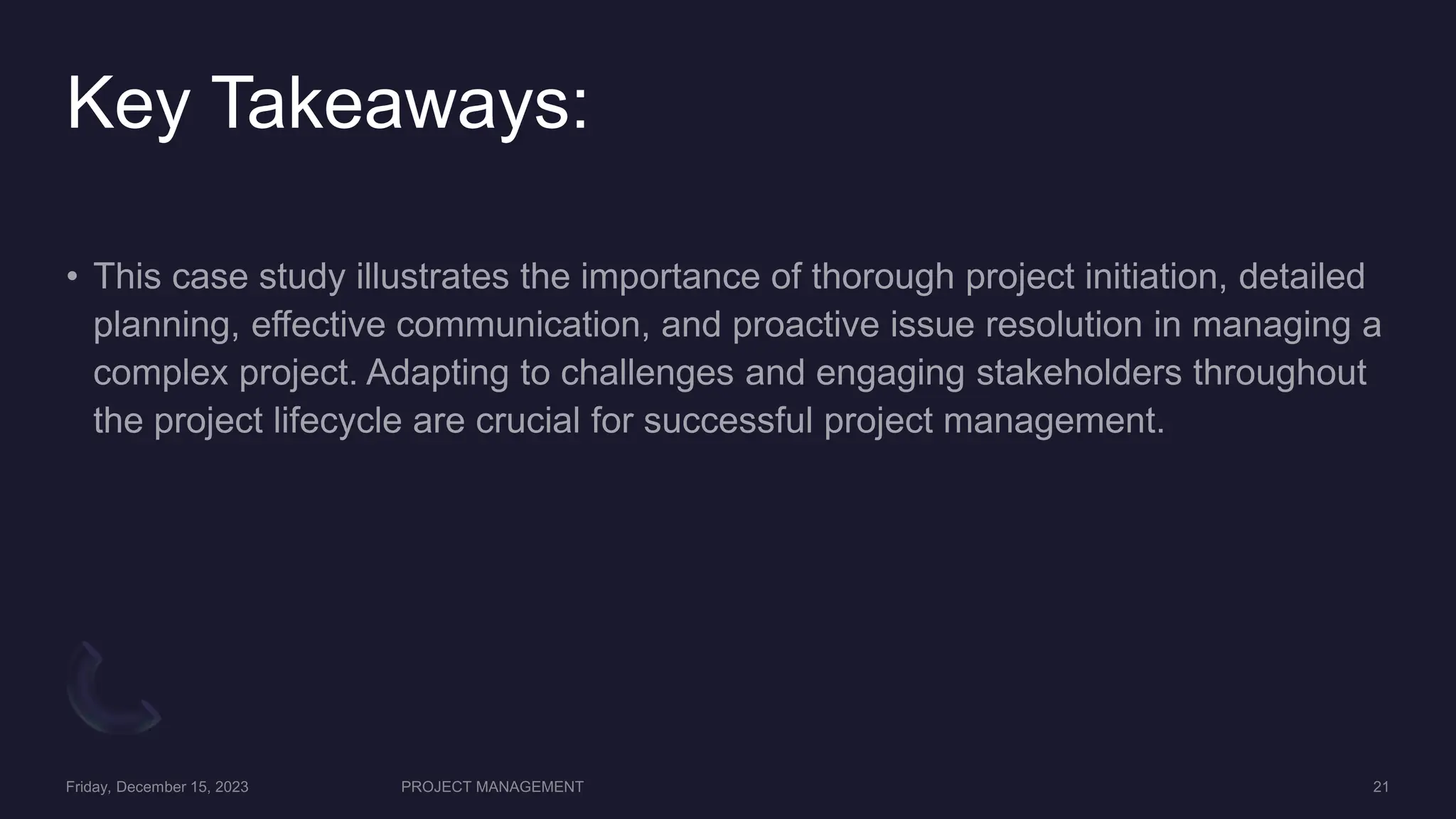The document discusses project management, outlining key elements and steps. It describes that project management involves planning, organizing, securing, and managing resources to achieve goals on time and within budget. Some main components are defining objectives, creating detailed plans, managing resources, monitoring progress, mitigating risks, and ensuring successful closure. Common project management steps are initiation, planning, execution, monitoring/controlling, and closing. The document also provides details on communication, stakeholder management, risk management, quality management, and other principles of effective project management.

